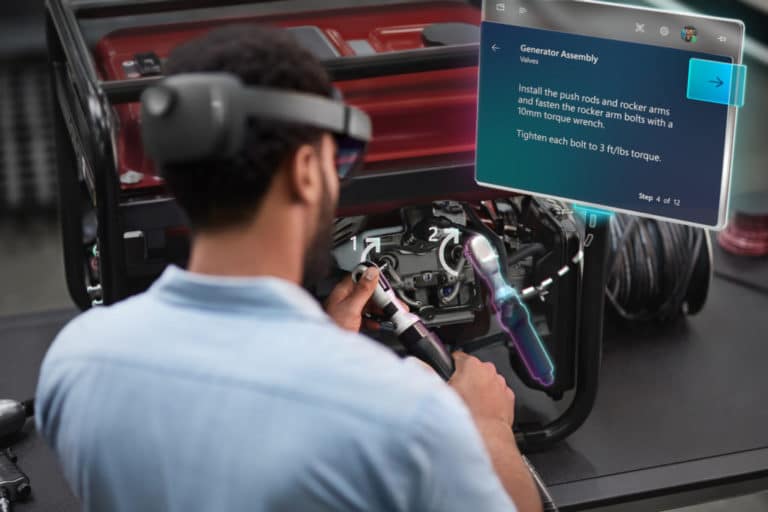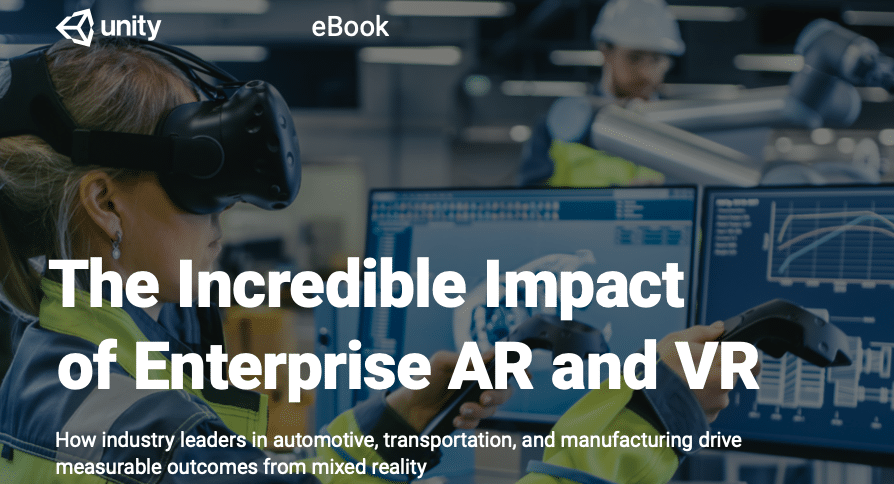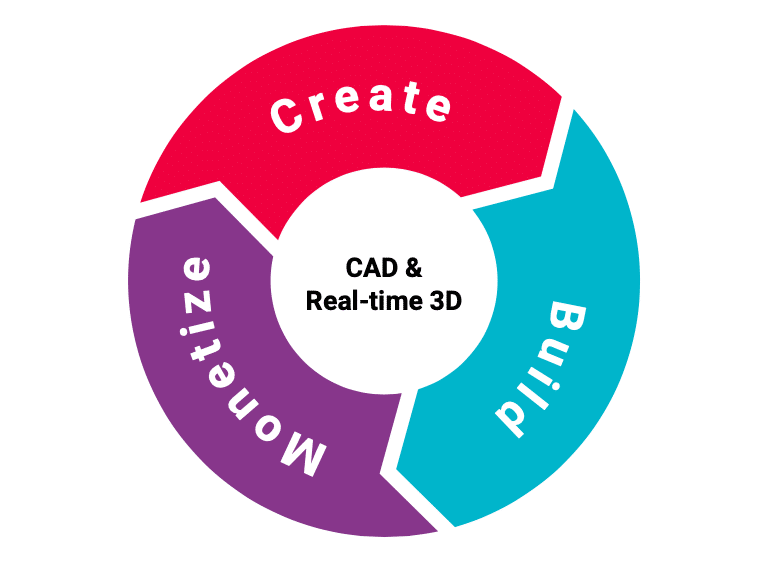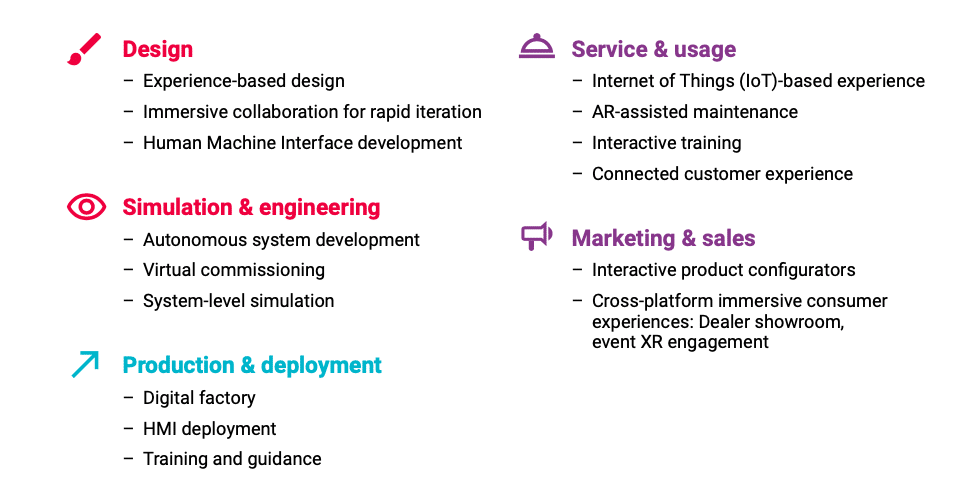
This article is the latest in AR Insider’s editorial contributor program. It excerpts a section from the report, The Incredible Impact of Enterprise AR & VR, to which AR Insider Editor Mike Boland contributed insights and commentary.
The Incredible Impact of Enterprise AR & VR
by Unity

As augmented and virtual reality (AR and VR – collectively mixed reality, or XR) technology and hardware continue to evolve and become more accessible, enterprises are expanding the range of use cases for XR across their organizations. What used to be seen as merely a marketing “gimmick” has evolved to now measurably impact the entire product lifecycle and customer experience.
Here are three critical areas where industry leaders in automotive, transportation, manufacturing, and more are seeing real ROI from interactive, immersive experiences:
More cost-effective and collaborative product design and development
— Since implementing its Collaborative Human Immersive Lab VR solution, Lockheed Martin has seen a tenfold ROI by building products virtually versus physical builds and testing, saving more than $10 million in costs last year with VR-assisted validation.
More efficient and effective maintenance and training
— Taqtile’s Manifest AR solution helped the U.S. Air Force dramatically reduce the number of errors made by its recruits on aircraft maintenance tasks to virtually zero.
— In a specific VR training pilot for the T6 Multivan, Volkswagen Nutzfahrzeuge (Volkswagen Commercial Vehicles) found the potential of reducing training time by 50 percent over conventional on-the-job training. The pilot also revealed that applying VR can save as much as one-third of the training cost. More engaging sales and marketing
— A real-time 3D activation by Visionaries 777 for INFINITI increased tradeshow booth leads and retail engagement by 35 percent.
Real-time 3D: Powering immersive XR experiences
Every manufacturer across the automotive and transportation, consumer products, and industrial equipment industries needs to design, engineer, produce, sell, service, and maintain products. Many processes and technologies, such as Product Lifecycle Management (PLM) and 3D design software, have helped streamline these workflows.
Until recently, real-time 3D – technology for creating interactive and immersive visualizations for AR, VR, and other platforms in which virtual objects look and behave like reality – was largely deployed for siloed visualization use cases, often peripheral to core product development. Most companies felt that 3D design and engineering tools sufficed for visualization, especially since preparing CAD data for real-time 3D required many cumbersome steps for data conversion and adjustments.
All that has changed as real-time 3D technology has become significantly easier to use. This can be attributed to multiple factors: Data preparation is now almost fully automated; integrations with 3D design tools have improved; visual scripting tools were introduced to reduce the need for programming experience; millions of assets are now available for download to speed up development; and more professionals are trained in this technology.
Now, we’ve crossed the tipping point for scaling real-time 3D. Most automotive OEMs and many manufacturers have started deploying real-time 3D for AR and VR in a more integrated way across their workflows and value chain – for not one, but hundreds of use cases.


By bringing interactivity and immersion to the entire product development lifecycle, real-time 3D experiences in VR and AR unlock synergies across departments, ultimately accelerating the product lifecycle. From initial product design and development to equipment maintenance and training, and all the way through to how consumers interact and purchase your products, real-time 3D is used to create and simulate digital twins that enable a new world of immersive visualization and simulation experiences.
For instance, with new industrial equipment or vehicles, design and engineering teams can reduce time for design review and optimization with interactive 3D models, while training and marketing teams can leverage these real-time renderings to commence their respective functions without the traditional delays of waiting for physical prototypes of static 3D models.
Many more synergies and benefits are unlocked when companies establish a real-time 3D end-to-end workflow for creating, building, and monetizing their products. These include significant cost and time savings, fewer errors, faster time to market, and increased efficiency – impacts that are only expected to grow as additional use cases and applications are realized in coming years.
Read the full report here.
For deeper XR data and intelligence, join ARtillery PRO and subscribe to the free AR Insider Weekly newsletter.
Disclosure: AR Insider has no financial stake in the companies mentioned in this post, nor received payment for its production. Disclosure and ethics policy can be seen here.
